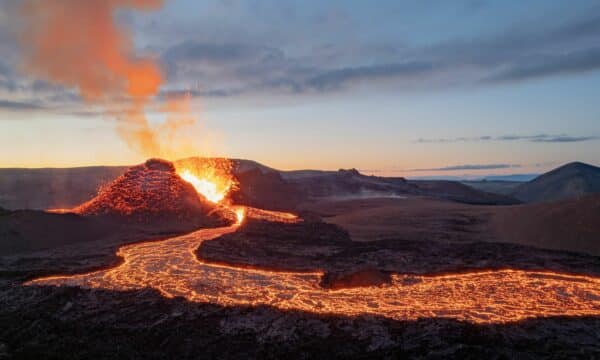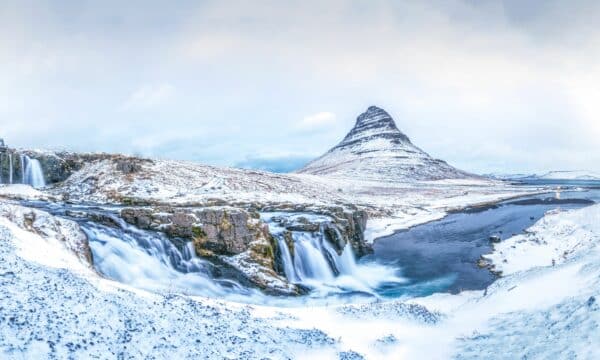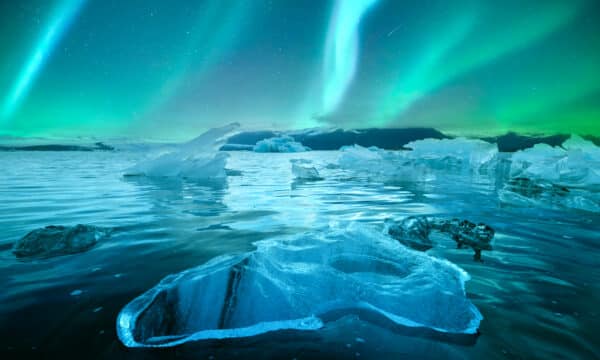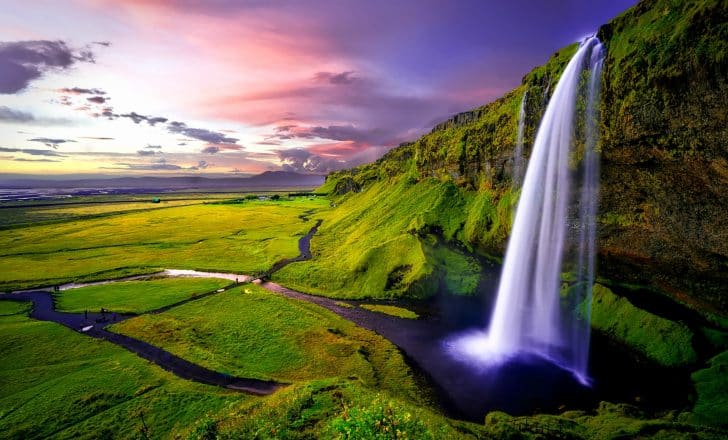
Iceland is a country that never fails to surprise.
With its staggering mountainscapes, flowing glacial rivers and cascading waterfalls, many guests are often left satisfied taking in the sights and sounds around them.
- Check out our range of great Winter Holiday Packages
Others are looking to pack their holiday with the very best tours, activities and experiences available throughout the country.
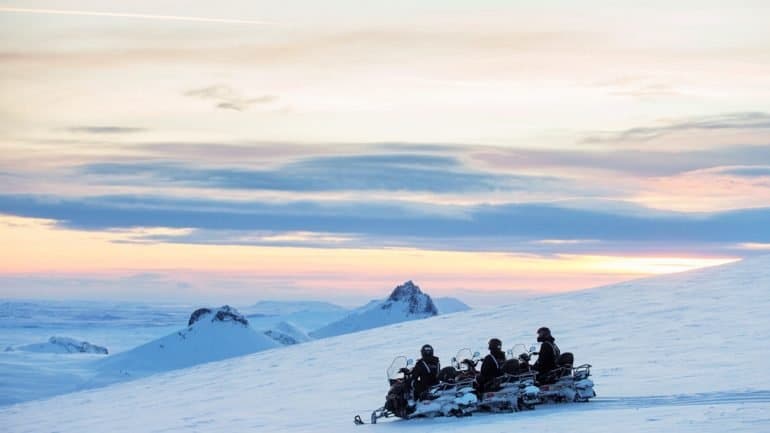
Thankfully, there is no shortage of things to do on this remarkable Nordic isle—especially if you’re done a little prep work before departing!
Iceland has it all; epic scenery, exhilarating tour options, deep history and fascinating local culture.
In short, there’s something here for everyone.
Together, let us look at the most exciting options for things to see and do during your time in the land of ice and fire.
1. Visit the Golden Circle Sightseeing Route
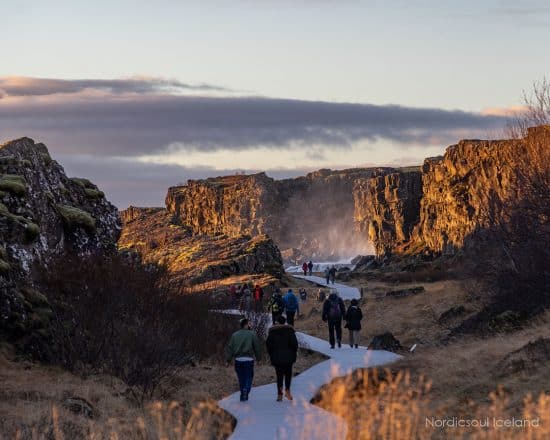
The Golden Circle is Iceland’s most popular sightseeing route, incorporating three incredible natural attractions; Þingvellir National Park, Geysir geothermal area and Gullfoss waterfall.
Þingvellir is the birthplace of Iceland’s democracy, where the Viking settlers built Alþingi, the democratic parliament still active today.
- Read more information in our full-length article The Best Things to See and Do in Iceland’s Golden Circle – A Practical Guide to Iceland’s Most Popular Sightseeing Route
The park is also located on the boundaries of the North American and Eurasian tectonic plates. It is the movement of these plates throughout the centuries that has shaped the Þingvellir’s rough and dramatic landscape.
Geysir geothermal area is where you’ll find rich history, bubbling mud pools, and — most importantly — erupting geysers. One of those is Strokkur which goes off every 5-10 minutes, reaching heights of around 15-20 metres.
Gullfoss is a stunning waterfall on the Hvítá River. The water rushes forth from Langjökull, Iceland’s second-largest glacier, before plunging down a 32-metre canyon.
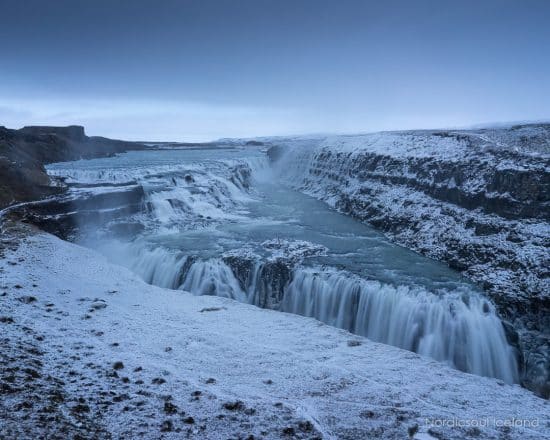
There are two ways to explore the Golden Circle.
One could either jump aboard a guided tour, which allows for a deeper understanding and appreciation of the sites.
A variety of tour bus sizes are available, as are private tours for smaller parties. It is possible to book the Golden Circle as a single-day experience, or incorporate into a larger, multi-day tour that travels to the other parts of the country.
The other way of experiencing the Golden Circle route is to explore yourself. This you can do by booking a self-drive tour.
In control of their own vehicle and scheduling, self-drive tours provide guests with a level of independence that is perfect for holidaymakers looking to avoid organised tour groups.
2. Hunt for the Northern Lights in the Winter
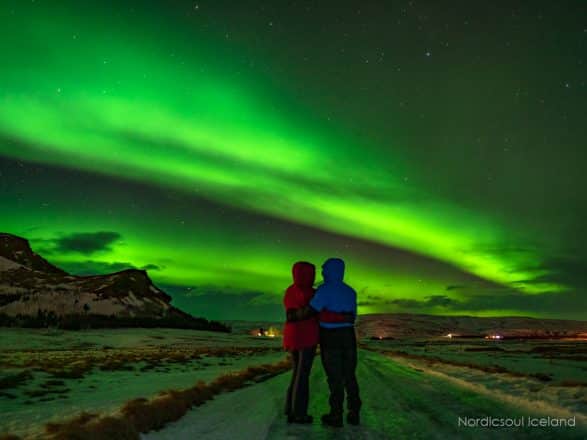
The Northern Lights—otherwise known as the Aurora Borealis—can be witnessed in Iceland during the winter months, September to April.
A genuinely mesmerizing cosmic phenomenon, the Northern Lights are best viewed on clear nights and away from the city limits, so as to avoid any light pollution.
- Maximise your chance of seeing this cosmic attraction by reading The Best Places to See the Northern Lights in Iceland & Other Helpful Hints
The Northern Lights can appear in a variety of ways. Sometimes they explode across the sky in colours of green, purple, white and red. At other times, they only appear as a single line of a green ribbon.
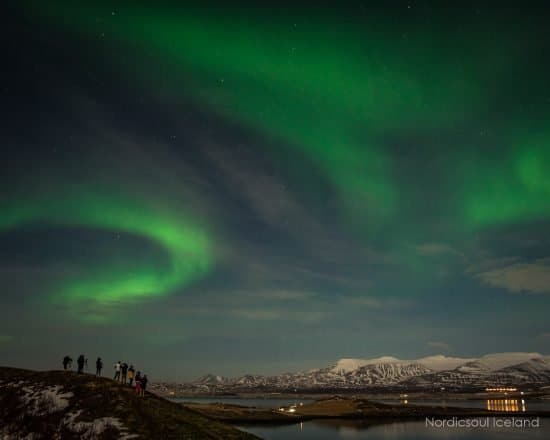
Seeing them requires as little as darkness and clear skies. However, the best way to experience the beautiful Auroras is with a Northern Lights tour.
Train Northern Lights hunters follow meteorologists predictions to find the best place each night to spot the Northern Lights. The guides also help their guest adjust their cameras to best capture the Auroras on film.
The Northern Lights are a natural phenomenon, and so sightings cannot be guaranteed. However, Northern Lights tours offer their guests a chance to partake in another tour if the lights don’t show up on their first try.
3. Go Inside an Ice Cave

Around 11% of Iceland is covered by enormous sheets of ice known as glaciers.
Within these ice caps, countless glittering caverns form each winter. This presents a truly unique experience for guests looking to immerse themselves in Icelandic nature.
Iceland’s most popular ice caves are located within Vatnajökull National Park in South-East Iceland, only a stone’s throw away from the famous Jökulsárlón glacier lagoon (—more on that later).

Vatnajökull ice caves can only be visited during the winter when the ice remains frozen enough for guests to enter safely.
Katla ice caves, on the other hand, can be visited throughout the year, and often incorporated into sightseeing tours in South Iceland.
Stepping inside an ice cave is an experience like no other but should only be entered with a trained glacier guide. Fortunately, Traveo offers a variety of ice cave tours, both single day trips and part of multi-day excursions.
4. Visit Jökulsárlón Glacier Lagoon
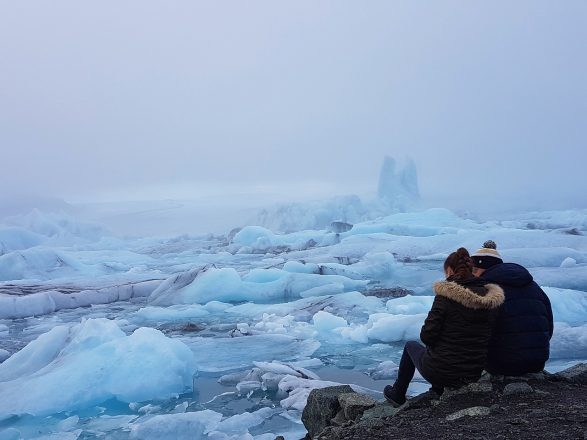
Jökulsárlón is a glacier lagoon found within the UNESCO World Heritage site, Vatnajökull National Park. It is, without doubt, one of the country’s most scenic locations; the perfect blend of tranquillity and drama.
Ethereal and unreal, Jökulsárlón is Iceland’s deepest lake, though it boasts many other draws that have helped ensure guests visit year after year.

For one, the lagoon’s surface is dotted with enormous floating icebergs, between which resident seals swim and play. Boat tours take guests out onto the lake, providing them with an opportunity to see the icebergs and wildlife up close.
Few minutes stroll from Jökulsárlón is Diamond Beach, a stretch of black sand shoreline where the icebergs wash ashore on their journey to the North Atlantic.
5. Relax at the Blue Lagoon (or other geothermal spas)
Surrounded by the jagged, black, volcanic rocks of the Reykjanes peninsula, the Blue Lagoon has long been one of Iceland’s biggest draws.
Its warm aquamarine water is heated geothermally and takes on its bright colour thanks to the high levels of silica. This silica congregates at the bottom of the pools and is said to be highly beneficial for the skin when rubbed into the body.
Many guests choose to stop at the Blue Lagoon either on their first or last day in the country, given its location between Keflavík International Airport and the capital, Reykjavík.
There are other geothermal spas to choose from when visiting Iceland. These alternatives often lack the crowds of the Blue Lagoon, as well as offering their own facilities that can rival the island’s superstar spa.
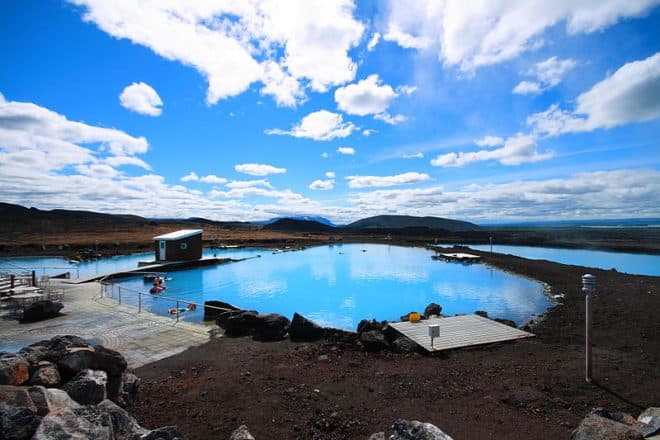
Fontana Spa, for instance, can be found on the banks of Lake Laugarvatn in South Iceland. Mývatn Nature Baths, on the other hand, is located in North Iceland, near the lake that bears its name. In the town of Húsavík, you can look for whales and unwind at the GeoSea geothermal sea baths.
Krauma Geothermal Baths can be found in the West. The spa gets its water from Europe’s largest hot spring and cools it with glacial water. Sitting on the banks of lake Urrðiavatn, Vök is the only geothermal spa in East Iceland.
In 2021, a new geothermal spa, Sky Lagoon, will open in the town of Kópavogur, only five minutes drive from downtown Reykjavík.
That is all aside from the countless natural pools and local swimming pools found all around the country.
6. Visit Snæfellsnes Peninsula
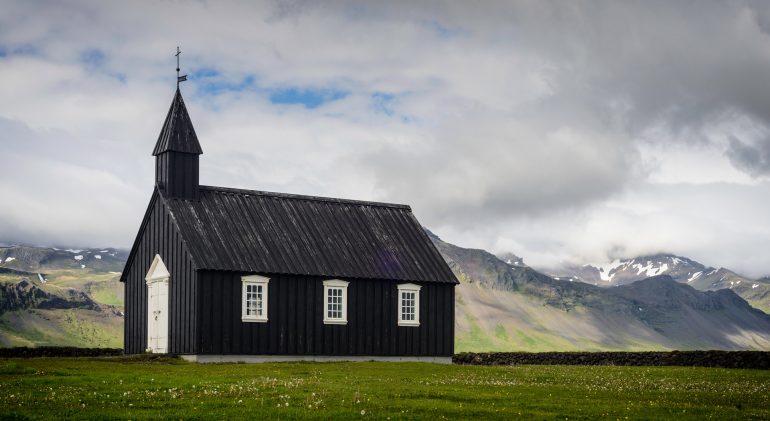
The Snæfellsnes Peninsula extends from the western mainland. It can be easily visited on a day tour and offers a variety of attractions found on this little 90 km (56 mi) stretch of land.
The peninsula can be characterised by its vast volcanic fields, historic explosion craters and isolated farmhouses. The best way to experience Snæfellsnes is by following its rugged black shorelines from end to end, making scenic stops along the way.
It would be a hard task to list all the beautiful natural attractions found on the peninsula. On the farthest end of this region sits its namesake, the mighty Snæfellsjökull glacier and stratovolcano. On clear days, one can see its devil-horns peaks across Faxaflói Bay all the way from Reykjavík.
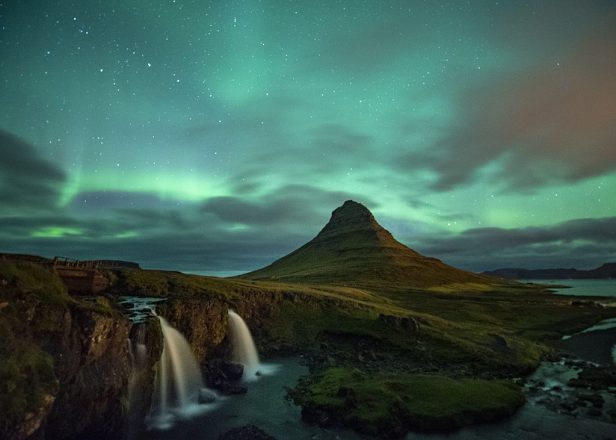
Snæfellsjökull famously served as the setting for Jules Vernes’ 1864 novel “Journey to the Centre of the Earth”. Today, many New-Age thinkers consider the site to be one of Iceland’s major energy centres.
Other notable attractions are the jet-black Búðakirkja church, the tiny hamlet of Arnarstapi, Djúpalónssandur black pebble beach, and the mountain Kirkjufell. Fans of the HBO series Game of Thrones might recognise Kirkjufell as the ‘mountain like an arrowhead’ from Season 7.
7. Travel the South Coast
Silvery waterfalls, glittering glaciers, and black sand beaches await all who venture out onto Iceland’s beautiful south coast.
When travelling from Reykjavík, the first stop on the south coast is usually Seljalandsfoss Waterfall. This narrow cascade boasts a small cave behind its falling water which visitors can enter for unique views and photographs.
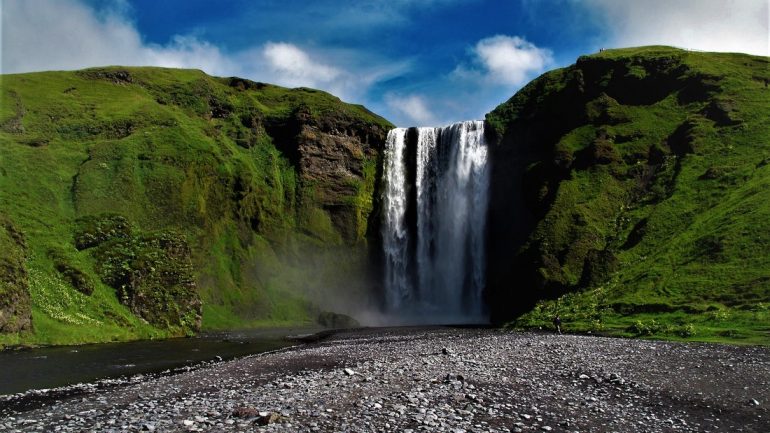
A short drive away, one finds Skógafoss Waterfall. Like Seljalandsfoss, it is 60 metres high but has a much wider curtain of water. This incredible attraction can be observed either from the bottom—guests can almost walk right up to the misty plume—or at the top of a winding wooden staircase that leads directly to the lip of the waterfall.
- Secure your spot on this brilliant 7 Day Winter Self-Drive – South Coast and Snæfellsnes today!
Another epic attraction on the South Coast is Reynisfjara black sand beach, nestled beside the coastal village of Vík í Mýrdal.
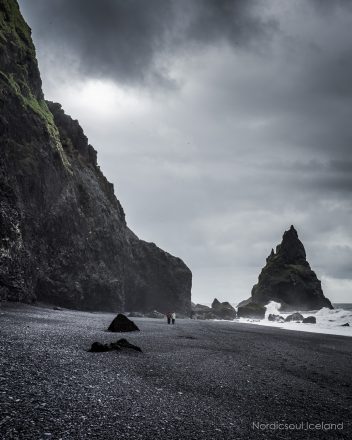
Reynisfjara is a truly dramatic location given the Reynisdranagar rock stacks that tower from the ocean like petrified trolls. This makes it a must-visit for photographers looking to capture Iceland’s most picturesque vistas.
While travelling along the south coast, you’ll see two majestic glaciers: the infamous Eyjafjallajökull and the larger Mýrdalsjökull. A variety of glacier hiking tours are available on the latter, perfect for those looking to have an icy adventure on their south coast trip.
8. Go off the beaten path into the Icelandic Highlands
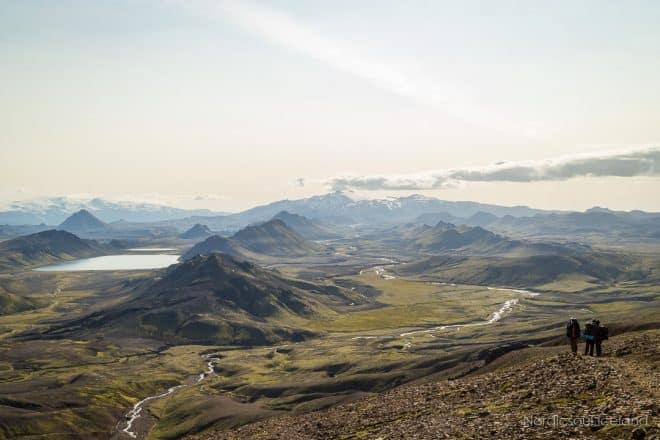
The Icelandic Highlands constitute a vast, mountainous area central to the country. When it comes to finding untouched landscapes and nature at its most raw, there can be no better alternative.
The two most famous locations in the Highlands are Landmannalaugar and Þórsmörk.
- Explore the Highlands your way on this brilliant Ring Road & Highlands of Iceland | 4-Day Assisted Trekking Tour & 10 Day Self-Drive Tour
Landmannalaugar (“The Pools of the People”) is instantly recognisable thanks to its multicoloured rhyolite hills that seem to shift in colour and shade with the passing sun.
Historically, Landmannalaugar was utilised by travelling sheep farmers for its many geothermal pools—perfectly placed, it seemed, for unthawing their frozen flock.
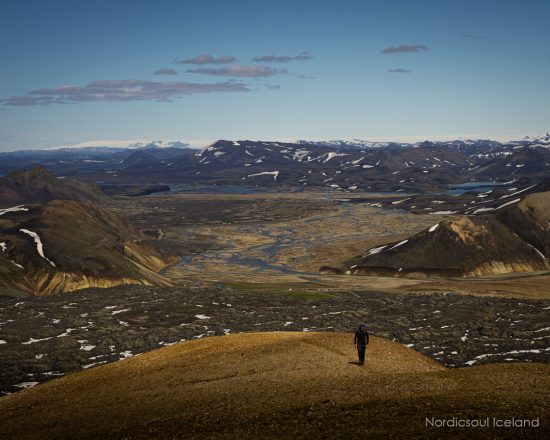
Þórsmörk (“The Valley of Thor”) is just as dramatic as its Norse Thunder God’s namesake. The entire area is nestled between the glaciers Mýrdalsjökull, Eyjafjallajökull and Tindfjallajökull, and boasts of green moss, black sand, and snow-capped mountains.
Þórsmörk also happens to be a proven habitat for Iceland’s only native mammal, the Arctic Fox.
Generally, the highlands are only accessible in the summer, when the roads are clear of snow. The popular hiking trail, Laugavegur, covers 54 km (33 mi) between Landmannalaugar and Þórsmörk, with a number of overnight camping huts dotted en route.
9. Explore the remote East Iceland or the Westfjords
Both East Iceland and the Westfjords are the least visited regions in isolation, due only to their distance from Reykjavík. Given that fact, both areas promise untouched scenery and a lack of crowds.
These reasons make visiting both the East and West a truly unique experience, often shining a light on the under-appreciated sides of Icelandic nature.
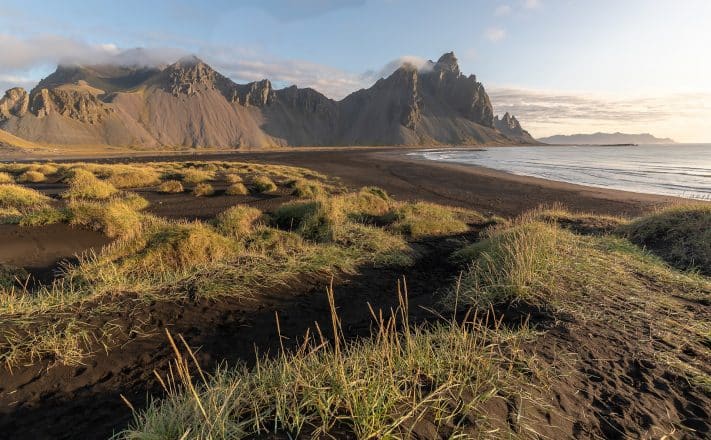
East Iceland’s most photographed feature is Mount Vestrahorn, which overlooks the black sand dunes of Stokksnes Peninsula. Its distinctively sharp peaks reach an ultimate height of 454 metres (16 ft), adding to the already domineering scenery for which East Iceland is famous.
Another fantastic spot is Lake Lagarfljót, located on the banks of Iceland’s largest national forest, Hallormsstaður. According to legend, Iceland’s version of the Scottish Loch Ness Monster is said to reside in Lagarfljót’s depths.
- Experience the very best this country has to offer on this 8-Day Summer Self Drive Tour Around the Ring Road – Golden Circle, Glacier Lagoon, Remote East Iceland & Akureyri
This supernatural beast is not the only wildlife unique to East Iceland. The Eastfjords are the only region in Iceland where guests can see herds of free-roaming reindeer.

Falling 128 meters into the striking Fljótsdalur valley, Hengifoss waterfall is another of the East’s most prominent landmarks. Its glistening glacial water is surrounded by layers of red clay and basaltic strata, creating a colour contrast that is out of this world.
In the Westfjords, Látrabjarg cliffs serve as both the westernmost point of Iceland and the entire European continent. These towering cliff sides attract millions of nesting birds each year, including puffins, guillemots and Arctic terns.
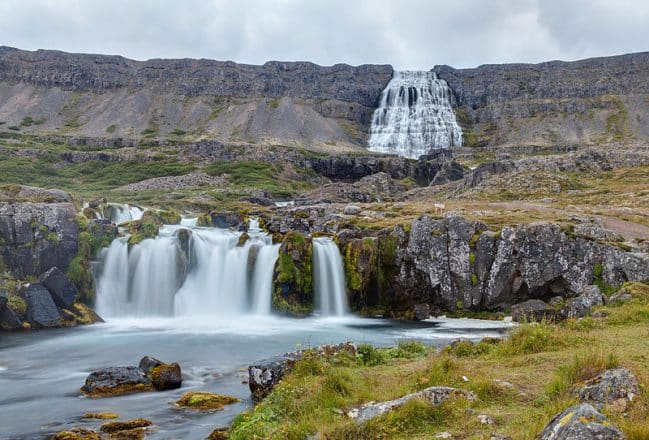
Dynjandi (meaning ‘Thunderous’) is the most renowned waterfall in the region, hence its nickname ‘The Jewel of the Westfjords’.
In reality, this feature is actually made up of seven different waterfalls that reach a total height of 100 metres (328 ft). The water cascades in such a way as to form the shape of a wedding cake that is as spectacular as it it’s strange.
10. Discover Akureyri and North Iceland
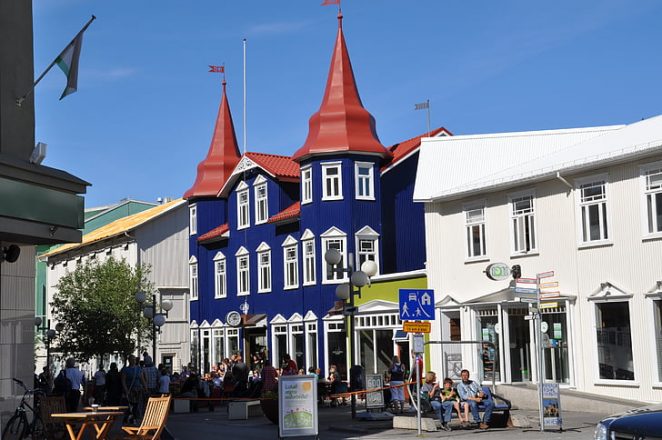
Akureyri is nicknamed ‘the Northern Capital of Iceland’, and is home to approximately 19,000 people.
The town’s landmarks include its fabulous botanical gardens—showcasing hundreds of plants from across Iceland and elsewhere—and its stunning signature church, Akureyrarkirkja.
- Don’t miss out on your chance to take part in this 10-Day Ring Road Road Trip | Self-Drive Tour of Golden Circle, South Iceland, Lake Myvatn & Snæfellsnes Peninsula
Whale watching tours are also popular in Akureyri, as they are across Iceland. But it is Akureyri’s neighbouring town, Húsavík, that has long been considered the ‘Whale Watching Capital of Europe’. This is thanks to the fortuitous feeding waters found just off its coast.
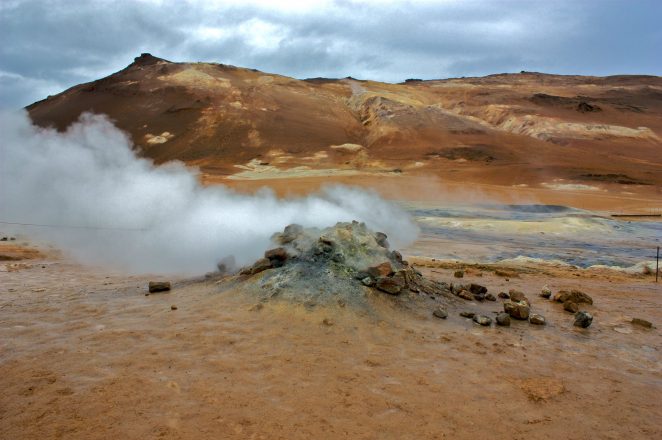
Another of North Iceland’s cherished regions centres around Lake Mývatn; a geothermal water body that first formed around 2300 years ago in a volcanic eruption.
Close to Mývatn you can find the geothermal region of Hveravellir. It is an otherworldly area which looks more like the landscapes of Mars than planet Earth. Dimmuborgir lava field is close by where you can find a natural labyrinth of massive lava rocks.
Finally, make sure to pay a visit to Hvítserkur rock stack in North-West Iceland. Standing at 15-metres high from the ocean, some claim this natural formation looks like an elephant drinking from the sea. But it is actually a troll, turned into stone by the sunlight…according to legend, at least.
11. Go Horseback Riding
Icelandic Horses are a small and muscular breed that is well-adapted to dealing with this island’s often harsh climate. They are also very cute.
These horses are a product of selective breeding, making them, perhaps, the most thorough-bred horses in the world. As such, any Icelandic horse that leaves the country is never allowed to return.
Icelandic Horses distinguish themselves from other breeds thanks to their five unique ‘gaits’, a consequence of their sure-footedness when travelling over rough terrain.
Horseback riding through Iceland’s beautiful landscape is a surefire way of discovering the country’s nature while simultaneously taking part in an activity that will leave you with brilliant memories.
- Looking for a truly unique tour experience? Book this 8-Day Horse & Sheep Gathering Tour in Iceland | Highlands, Golden Circle, Snæfellsnes Peninsula & Whale Watching to secure your spot.
Tours are available by skill-level, so fear not if this will be your first time in the saddle. Horse riding guides in Iceland are highly experienced and will be able to draw out the very best from both you and your steed.
12. See Whales, Dolphins and Atlantic Puffins
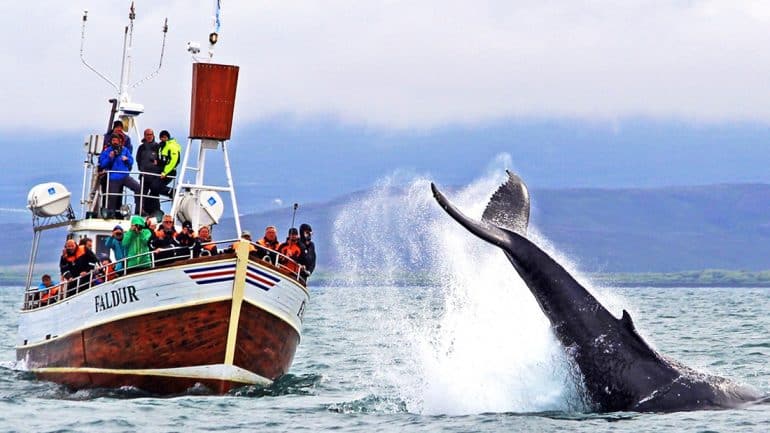
Whale watching and puffin tours depart from Iceland’s harbours multiple times a day. You can find tours on the Snæfellsnes Peninsula, in the North — both in Akureyri and Húsavík — and in the capital, Reykjavík.
There are twenty different species of cetacean native to Icelandic coastal waters, with the most commonly spotted species being Minke whales, Humpback whales and Harbour porpoises. Although Orcas, Sperm whales, and even the Blue whale have been spotted around the country.

Whale watchers in the summer will no doubt discover Atlantic Puffins, one of Iceland’s most iconic bird species, bobbing placidly atop the waves.
- Looking to more about this feathery Icelandic icon? Be sure to read Everything You Need to Know About Puffins in Iceland
This migratory species arrives every summer, staying throughout the season to nest and breed. Iceland attracts around 60% of the world’s puffin population each year, with the largest colony found in the Westman Islands.
13. Experience Local Arts and Culture
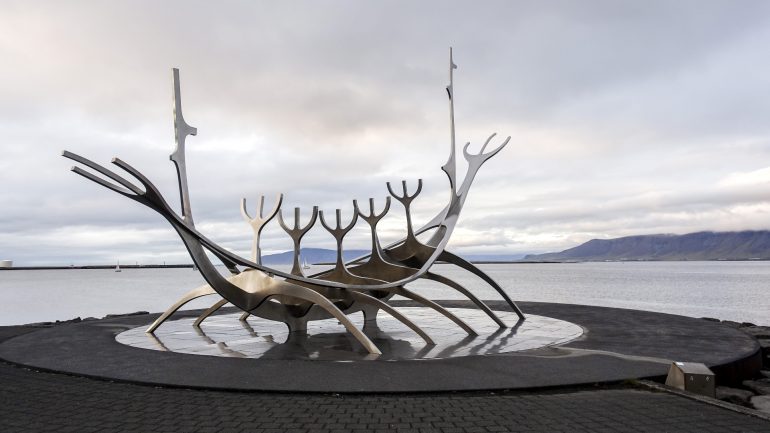
Historically, Icelanders have excelled in artistic efforts, contributing fantastic art, literature and music to the global zeitgeist.
When it comes to music, artists like Björk, Sigur Rós and Of Monsters And Men are just the tip of the proverbial iceberg.
Many bars host live music events throughout the week, including the Danish Pub (Den Danske Kro), The Drunk Rabbit, and the whiskey-bar, Dillon.
If, instead of live music, you’re looking to pick up melodic souvenirs of your time in the land of ice and fire, make sure to stop by one of downtown Reykjavík’s many record stores.
12 Tónar, Lucky Records and Reykjavik Records all offer albums and LPs by a range of Icelandic and international musicians.
Icelanders have also contributed significantly to the written word. In 1955, the country’s most famous writer, Halldór Laxness, was awarded the Nobel Prize in Literature “… for his vivid epic power, which has renewed the great narrative art of Iceland.”
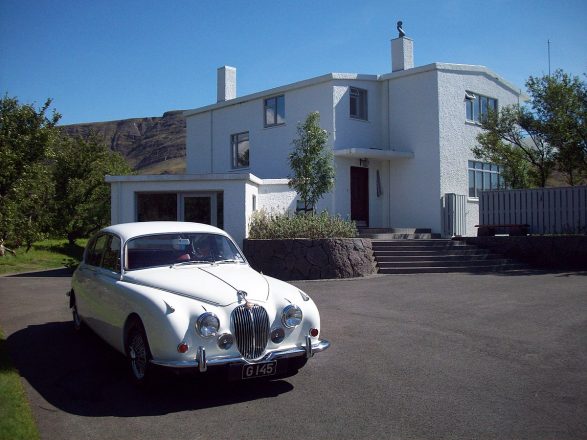
Throughout his working life, Laxness lived just outside of Reykjavík in the picturesque town of Mosfellsbær. Since his death, his iconic white house has been renovated into a museum dedicated to his penmanship. It can be visited en route to Þingvellir National Park—just look out for his snazzy Jaguar, that still sits parked in the driveway.
Dotted around the country are numerous museums dedicated to various topics from history and art to volcanic eruptions and wildlife. In Reykjavík, you can find The National Museum of Iceland and the Reykjavík Art Museum, as well as more quirky places such as The Punk Museum and the Icelandic Phallological Museum.
14. Check out the Reykjavík Nightlife
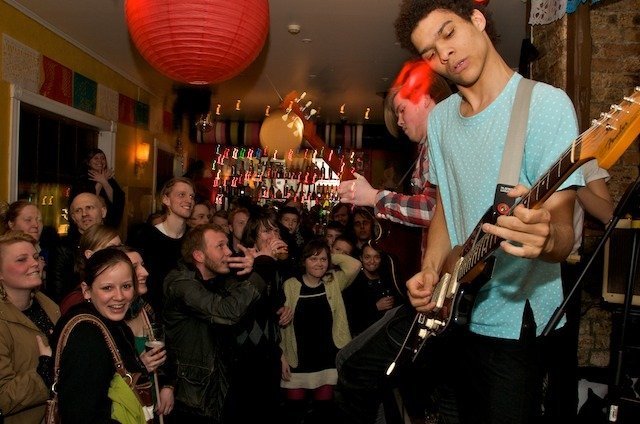
Given Reykjavík’s quaint architecture and small population, the city has a surprisingly lively nightlife scene. Happy hours and discounts in a wide variety of bars and restaurants have quenched the thirst of countless visitors and locals alike, cementing the capital as one of Europe’s most unique party cities.
Which bars you are looking to visit is entirely down to personal preference, though some definitely come more highly-recommended than others.
- Looking for thrills and excitement? This 1-Hour ATV Tour Near Reykjavik is your best option!
Loft Hostel, Petersen Svítan, and Sky Bar set themselves apart by both offering scenic balconies where guests can sit back and enjoy their beverages while enjoying the city skyline. Others, like Dubliner, the Icelandic Bar, Dillon and Prikið offer more down-to-earth experiences, and often get very busy on weekend nights.

For the sheer novelty of the experience, make sure to pay a visit to Lebowski Bar. This is a fun and popular establishment themed after the cult 1998 comedy, ‘The Big Lebowski’.
Aside from its colourful and authentically cinematic interior-decor, guests can sample a variety of White Russian cocktails, bringing them closer to living by the Dude’s laid-back philosophy than ever before.
Don’t wonder… WANDER!
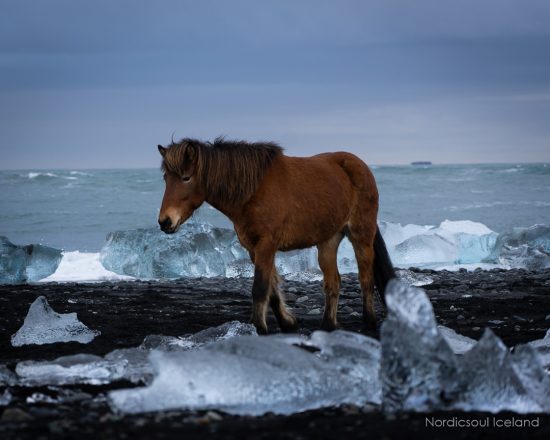
This list is by no way definitive, but hopefully, it has opened your eyes as to just how diverse an experience travelling around Iceland can be.
In a country that offers so much in the way of natural beauty and historic culture, settling on a firm itinerary can be challenging. As such, make sure to check out other blogs and articles for inspiration, or contact us directly, we are always willing to help.
More often than not, visitors leave Iceland knowing all too well that a return-visit will be on the cards, if only to see and experience the island in all new ways.
But only one question remains; what will YOU do during your time in Iceland?

